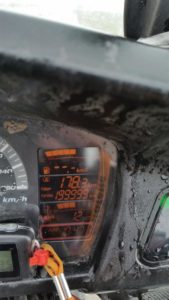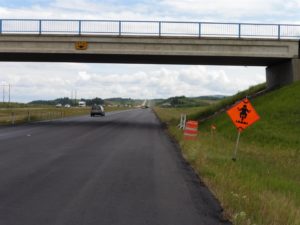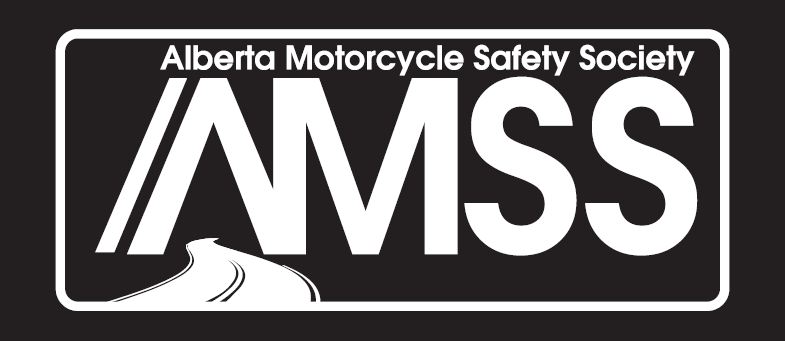Advice for (new) Riders – Part 1
Your Motorcycle
By: R. Bruce Thomas & Friends
Happy New Year everyone!
Yes, it’s February, but the AMSS doesn’t put out a News Update in January so here we are wishing you a Happy New Year and yearning for new beginnings in February. Which, although a month late by the calendar, is perfect timing for the topic at hand.
With motorcycle sales having increased in 2020 there may be a lot of new riders out there, or older riders who have come back to riding, which essentially makes them new riders as well. And in the spring, after our bikes have been parked for four or five months, we all need to refresh our skills and re-learn riding habits. Like I said – new beginnings.
“What advice would you give a new rider?” was a question the Texas Motorcycle Safety and Awareness Campaign posted to their Twitter account (@LookLearnLive) last August.
I responded to the tweet with a number of items and then, since there's only so much you can fit in a tweet, started making a bigger list. But it’s a long time since I was a new rider, and it’s been a few years since I helped someone get started at riding. And I would never pretend to know everything there is to know about riding. So I sent the question out to my riding friends and got plenty of great responses and that is why the byline on this piece credits R. Bruce Thomas & friends.
And just for reference sake, I’ve got friends who have:
- raced on the track,
- ridden (very quickly!) on the Bonneville Salt Flats,

My friend hit 155+ mph landspeed racing at the Bonneville Salt Flats.
- completed the Iron Butt Rally (some more than once!),
- ridden 100’s of thousands of kilometers,
- kept the rubber rolling for decades,
- survived serious collisions,
- done gnarly things in the dirt,
- removed a wheel and repaired a flat tire on the side of the road,
- a toolbox full of many other useful skills.
There seem to be many sources and variations on the following quote but I’ll throw out this version and credit ‘anonymous’: “A wise rider once said, I can teach you all you know, but I can’t teach you all I know”. While that may be a bit confusing at first read, it simply means there is a big difference between knowledge and experience, and the latter is something you have to get on your own. One of my friends passed along this similar gem he got from his father: "I can teach you to ride in a few hours but, remember, it takes way longer to become a rider".
My friends and I hope to help with some of the required knowledge, although, there is so much to know that this cannot possibly be a definitive list. As you get more experience you will understand that there are things that you do when riding that you just simply don’t think about. It was for that reason that I was happy to rent the same bike that we have here when we went to New Zealand, Britain, and Australia, so I didn’t have to think about riding and could concentrate on staying in the left lane.
The title at the top is also a first for one of my articles as it claims to be "Part 1". The reason this is Part 1 is that riding a motorcycle can be very easy. There is just so much to learn and know in order to make proficient riding easy and, because of that, and because I got so much input from my friends, I am going to break this “Advice for (new) riders” piece into two or maybe three installments. In this first piece we’ll have a look at topics relative to your motorcycle.

odo-199K - you may be a new rider now but if you do the right things you could enjoy a lot of time in the saddle
For starters, be realistic when you acquire your first bike. It is easier to learn to ride a smaller bike than a big brute. You need the same skills and abilities on a smaller machine and, once you've gotten proficient, you will be well prepared to move up to a bigger bike. It is also more satisfying to ride a small bike effectively rather than struggling with a large bike.
Riding a motorcycle is quite simple as soon as you master the six input controls, and learn to balance, and watch everything around you, and around where you will be in 30 seconds, and pay attention to the weather, and the road surface and, well, just everything.
The six input controls on a motorcycle are the handlebars, throttle, clutch, gear shifter, front brake, and rear brake. Each and every one of these controls affects the machine in a different way and it is up to you as the rider to understand how. Motorcycles move along the roads on two contact patches; each patch is about the size of a credit card. These are your connections to the world and the manner in which you operate the controls will determine if your motorcycle stays upright or not.
Learn to be smooth on the controls. No abrupt or sudden changes should be your mantra.
Even though you are in possession of the controls it is imperative that you respect the machine. Few people have the skill to push the limits on modern motorcycles. As a new rider, you aren't one of those people. As a road rider you better not try to be. Search the Internet for “Marc Marquez crash saves” to see someone who can push limits, who knows his motorcycle and, just as important, rides on racetracks he is very familiar with and which have all the safety features including Medevac Helicopters and teams of doctors standing by. To get you started, here’s a sample from 2019 - https://www.youtube.com/watch?v=RXQcX7xzdxY
And yes, Marquez won the MotoGP World Championship in 2019 in spite of, and maybe because of his ability to recover from, those spectacular episodes.
Relax and enjoy riding. White knuckles and fighting against the machine are no way

Squiggles - don't freak out when the road isn't ideal for motorcycles. Relax, look far ahead, and try to avoid sudden speed or direction changes
to ride. Motorcycles want to stay upright once they are moving but they do move around underneath you. Understand that and don't fight it.
Motorcycles are complex machines that you need to understand if you are to become good at riding one. Counter steering, for example, is one aspect that many people have difficulty with. To make the motorcycle turn right, you push on the right hand grip. Gently and smoothly. You'll get a feel for it over time. The change to the contact patch of the tire and the geometry of the front end makes the motorcycle turn in the direction you push. This is counterintuitive to what you would think, which is what causes the confusion, but it is the only way to safely, securely, and accurately turn a motorcycle.
Braking is another area that requires understanding and smooth control. The front brake is what you should use almost exclusively. There is a reason why most motorcycles have one or two large brake rotors up front and a single smaller one at the back. As you apply the brakes, the weight balance of the machine shifts forward which causes more force to be applied to the front wheel and less to the rear wheel. The rear wheel will not have as solid a connection with the road as the front and therefore provides less traction (imagine the limit on your credit card just got drastically smaller) which means less stopping power from the rear wheel. Anti-lock brake systems reduce the possibility of executing an end-over on your motorcycle. Barring the presence of anti-lock brakes - be smooth. Learning to be proactive in your vision and riding habits will help you avoid panic situations that would have you possibly lock the front wheel or activate the anti-lock systems.
Learn basic maintenance and operation of your motorcycle. You will save money if you change your own oil, brake pads, and tires, as well as making you more familiar with the machine. When something happens and your machine won't start you won't panic if you can do some basic troubleshooting. It is surprising how many times people are foiled because they forget to reset the engine kill switch or raise the side stand.
Carry a usable toolkit that allows you to do basic maintenance when you are away from home. This should include a means of inflating a low or flat tire in order to maintain effective contact patches.
Learn, or printout, the T-CLOCS Inspection Checklist (Tires, Controls, Lights/Electrical, Oil/Other fluids, Chassis, Stands) and inspect your bike before riding. Fix any issues you discover.

Lights - extra lighting makes you more visible to traffic and improves your night riding
Farkles is a word you should get to know and love. Meaning "an addition to your motorcycle that adds Function and/or Sparkle", farkles are everything a person adds, from extra lighting for enhanced visibility to seat modifications for improved comfort. If you aren't visible when you are riding your motorcycle you are more at risk of getting hit. It is also more difficult to see when riding at night without extra lighting. To paraphrase Robbie Burns's poem "To a Mouse", the best laid plans of motorcyclists often go awry; no matter your planning, at some point you will ride after dark. As for the seat, if you aren't comfortable on your motorcycle you won't ride it - plain and simple.
In addition to making sure your motorcycle is fit to be ridden, make sure that you are fit to ride. It is far more fun to be able to ride without being in pain or having to stop for regular breaks and, should you experience a close encounter with a hard object, you stand a better chance of a quick recovery if you are in good physical condition beforehand.
And that's plenty for now.
From my friends and I to all of you, Happy New Year, and remember, a successful riding season requires planning and preparation. It's not too late to make some resolutions and stick to them.
